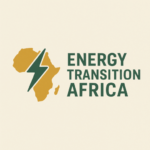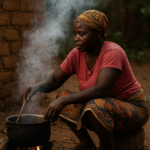The paradox of darkness in the age of sunlight
On a humid evening in Lagos, a shopkeeper wheels out a diesel generator, its rattle and fumes filling the street as darkness swallows the neighbourhood. Two thousand miles south, in Johannesburg, families brace for another round of “load shedding”, planned power cuts that have become a daily ritual. Across the continent, stories like these are repeated with weary familiarity.
Africa, home to 60 per cent of the world’s best solar resources, remains shackled to an unreliable, outdated energy architecture. These systems, often sustained by subsidies and political inertia, neither facilitate power growth nor enable genuine transition. They are what we call zombie energy systems, infrastructures that refuse to die, draining resources while blocking the birth of the new.
If Africa is to unlock its renewable future, these zombies must be confronted head-on.
What are zombie energy systems?
Zombie systems are the coal plants that limp along with poor efficiency. They are the national grids that leak more power than they deliver. They are the utilities unable to recover costs, trapped in cycles of debt, corruption, and inefficiency. They are the outdated diesel and heavy-fuel plants that limp through breakdowns, patched up just enough to keep running.
For governments, decommissioning these systems is a politically costly endeavour. Closing them means job losses, stranded assets, and tough conversations with powerful fossil lobbies. Yet keeping them alive siphons scarce resources away from new solar, wind, and hydro projects that Africa desperately needs.
In effect, zombie systems create a double burden: they provide unreliable electricity to today’s citizens while strangling tomorrow’s transition.
Why zombies matter: the scale of the drag
The numbers are sobering. More than 600 million Africans still lack access to reliable electricity. The African Development Bank estimates that universal access would require investments of around $64 billion annually, reaching 90 million people each year until 2030.
Yet the reality is that new renewable investments must compete against subsidies poured into propping up failing legacy systems. In South Africa, Eskom spends billions on keeping coal plants alive even as rolling blackouts paralyse the economy. In Nigeria, subsidies on petrol and grid bailouts run into billions, while solar projects languish, starved of capital.
This is the core contradiction: Africa cannot sprint into the future while dragging corpses from the past.
The human cost of zombie energy
The consequences are not abstract. Clinics in rural Mozambique struggle to refrigerate vaccines because power is intermittent. Small enterprises in Uganda spend more on diesel than on staff salaries. Students in Sierra Leone revise by candlelight or the dim glow of kerosene lamps.
Women, in particular, carry the heaviest load. Energy poverty forces them to spend hours gathering firewood, exposes them to toxic smoke from open fires, and limits their economic participation. The absence of gender-responsive planning in energy strategies perpetuates this exclusion. A just transition that fails women is no transition at all.
Zombie systems, then, are not merely inefficient; they are unjust.
Financing the undead
It is fashionable to speak of Africa’s renewable potential, of vast deserts that could power the world, of endless wind corridors, of geothermal wealth waiting to be tapped. But potential alone does not build grids. Financing does.
Here, Africa faces a brutal dilemma. Renewable capital flows into the continent have risen by 48 per cent in recent years, yet they remain a fraction of what is required. According to the Climate Policy Initiative, only 20–23 per cent of the climate finance pledged to African countries actually arrives. Worse, more than half of that comes as debt, deepening fiscal pressures on already fragile economies.
At the same time, borrowing costs for African countries are among the highest in the world, driven by credit risk and currency volatility. This means it is often cheaper for Europe to borrow and build solar in North Africa than for African nations themselves to fund projects at home.
Zombie systems thrive in this distorted landscape. They are easier for governments to keep alive with subsidies than to secure affordable finance for bold new builds.
The regional puzzle: fragmented grids
If there is one way to slay the zombies, it lies in scale. Regional power pools, in West, East, and Southern Africa, offer the promise of economies of scale, greater market stability, and reduced emergency costs. Studies suggest that cross-border transmission infrastructure worth $19 billion could yield returns of 22 per cent annually through lower generation and emergency power costs.
Yet progress has been painfully slow. National interests, weak governance, and lack of trust keep grids fragmented. Zombie systems thrive in silos, but regional integration could unlock new life for renewables.
The gender gap in transition planning
The invisibility of women in Africa’s energy planning is itself a structural barrier. Women disproportionately experience the impact of energy poverty, yet rarely sit at the tables where energy futures are decided.
Gender audits, targeted financing for women-led enterprises, and representation in decision-making must become integral to Africa’s energy transition strategies. Without this, the risk is that zombie systems are replaced by new infrastructures that replicate the same inequalities.
Breaking the zombie grip: what must change
If Africa is serious about energy transformation, zombie systems must be decommissioned, not merely patched. This requires three decisive shifts:
- Targeted Finance for Decommissioning
International finance should include dedicated facilities for dismantling outdated grids and fossil plants, not just funding shiny new solar parks. - Blended Finance and Debt Relief
Concessional finance and debt swaps can reduce borrowing costs and free up fiscal space for investment in modern systems. - Capacity Building and Regulatory Reform
Energy regulators must be empowered to manage bidding processes, feed-in tariffs, and cross-border trade efficiently. Without this, even funded projects stall. - Regional Integration
Cross-border grids should be prioritised as engines of resilience and cost-saving, rather than treated as optional. - Gender-Responsive Planning
Policies and finance must explicitly address women’s roles and needs, ensuring energy access translates into empowerment.
Why the world should care
Africa’s transition is not a local story; it is a global one. The continent’s population is projected to double by 2050. Its cities are among the fastest-growing in the world. If Africa remains stuck with zombie systems, it cannot contribute meaningfully to global decarbonisation. Worse, it risks being locked into decades of dirty, unreliable energy, just as the world races to zero.
For funders, think tanks, and governments, the choice is stark: continue financing palliative care for zombie systems, or support Africa in burying them once and for all.
A call to courage
Africa stands at an inflexion point. The continent cannot afford to nurture the corpses of its past energy systems while the world demands a renewable future. Zombie energy systems must be retired with courage and foresight.
As one South African engineer put it, staring at a faltering coal plant: “This thing should have been decommissioned ten years ago. Instead, we’re still here, holding it together with duct tape.”
Africa’s just transition cannot be built on duct tape. It must be built on vision, equity, and the courage to bury the dead.




Pingback: Dig, Ship, Repeat? The Extractivist Trap in Africa’s Critical Minerals Boom - Energy Transition Africa Africa’s Critical Minerals: Adding Value or Repeating History?
Pingback: Funding the Flip: Why Africa’s Clean Energy Transition Is Stuck, And How to Unblock It - Energy Transition Africa Funding the Flip: Why Africa’s Clean Energy Transition Is Stuck — And How to Unblock It